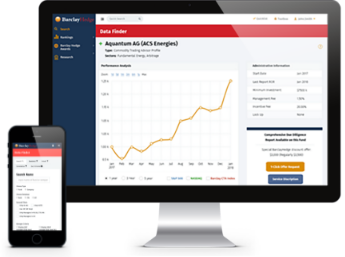A fund of hedge funds is an investment vehicle whose portfolio consists of shares in a number of hedge funds.
The fund of funds strategy can be applied to any type of investment fund, from a mutual fund to a private equity fund. The fund of funds – which may also be called a collective investment or a multi-manager investment – simply holds a portfolio of other investment funds instead of investing directly in securities, such as stocks, bonds, commodities or derivatives.
Funds of hedge funds simply follow this strategy by constructing a portfolio of other hedge funds. How the underlying hedge funds are chosen can vary. A fund of hedge funds may invest only in hedge funds using a particular management strategy. Or, a fund of hedge funds may invest in hedge funds using many different strategies in an attempt to gain exposure to all of them.
The benefit of owning any fund of fund is experienced management and diversification. A portfolio manager uses his or her experience and skill to select the best underlying funds based on past performance and other factors. If the portfolio manager is talented, this can increase return potential and decrease risk potential, since putting your eggs in more than one basket may reduce the dangers associated with investing in a single hedge fund.
With funds of hedge funds, there is an additional benefit, given that most hedge funds have prohibitively high initial minimum investments. Through a fund of hedge funds, investors can theoretically gain access to a number of the country’s best hedge funds with a relatively smaller investment. For example, investing in five hedge funds with $1,000,000 minimums would require $5,000,000. Investing in a fund of hedge funds that invests in those same underlying funds may require just $1,000,000.
In fact, it may even require less. Sometimes a fund of hedge funds will invest in only one hedge fund, but offer shares at a much lower initial minimum investment that the underlying hedge fund does. This gives investors access to an acclaimed fund with less cash than would normally be required.
One disadvantage of investing in a fund of hedge funds is the fees. These funds generally charge a fee for their services in addition to the fees charged by the underlying hedge funds. In other words, each underlying hedge fund might charge a fee of 1% to 2% of assets under management and an incentive fee of 15% to 25% of profits generated. On top of that, a fund of hedge funds will typically charge its own fees. While fund of hedge funds have been criticized for this “incremental fee” structure, portfolio managers often argue that the fees are more than made up for by potential higher risk-adjusted returns offered by funds of hedge funds.
In summary, funds of hedge funds may be appealing to investors seeking the high return potential of hedge funds along with a little diversification to help manage risk and lower investment minimums – but before investing, be sure you know how much fees will cut into your returns.
Get comprehensive and up-to-date information on 6100 + Hedge Funds, Funds of Funds, and CTAs in the Barclay Global Hedge Fund Database.


